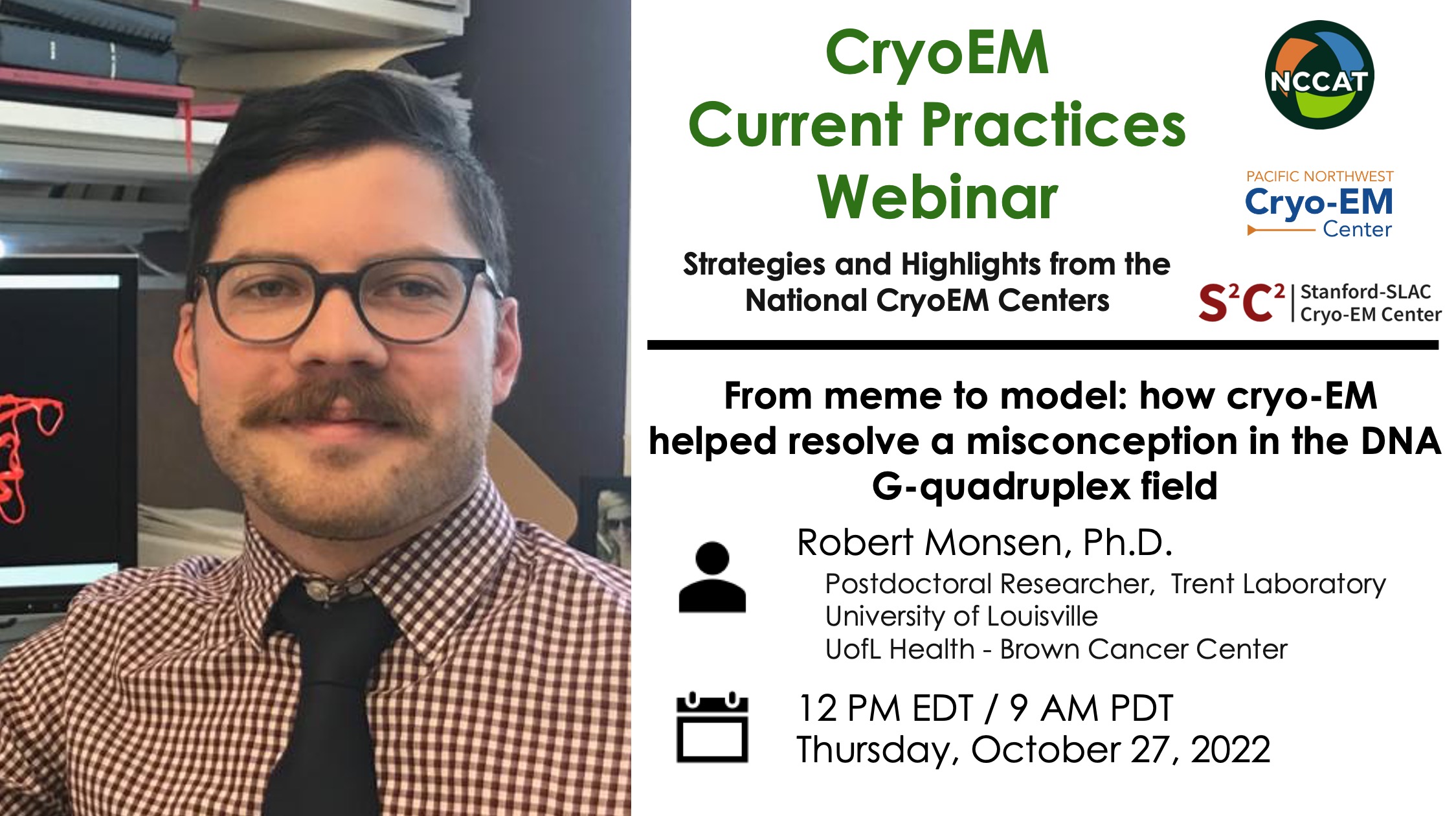The next installment of the monthly methods-focused webinar series hosted by the National Center for CryoEM Access and Training (NCCAT), the Pacific Northwest Center for CryoEM (PNCC), and the Stanford-SLAC CryoEM Center (S2C2) will be held on
Thursday October 27, 2022 at 12 PM eastern / 9 AM pacific time
Robert Monsen PhD, Postdoctoral Researcher, Trent Laboratory, University of Louisville Health, Brown Cancer Center
will present:
From meme to model: how cryo-EM helped resolve a misconception in the DNA G-quadruplex field
Talk Abstract: Genomic regions with high guanine content have the capacity to fold into four-stranded non-B DNA structures known as G-quadruplexes (G4s). Extensive bioinformatic inquiries have revealed that G4 motifs are conserved and non-randomly distributed throughout the genome. G4s are epigenetic features that act as transcription factor hubs which can regulate gene expression in temporal, spatial, cell-type, and cell-state-dependent ways. No high-resolution structural information exists for G4s in their natural genomic environment because of the difficulty in studying such long heterogenous DNAs by X-ray diffraction and NMR methods. Here we present an investigation of a 28.5 kDa duplex-G4-duplex (“DGD”) model promoter system using the integration of cryo-EM, molecular dynamics, and small-angle X-ray scattering (SAXS). The nominal resolution of the cryo-EM maps range from 6.8-8.2 Å and offer adequate secondary structure information for model refinement. The integration of SAXS and molecular dynamics with models derived from cryo-EM show that in the context of a duplex bubble the G4 preferentially stacks against one of the two duplex “handles” to form an asymmetric particle with 49-67° bend. This model goes against the common belief in the G4 field that G4s (and their C-rich complements) protrude away from the duplex axis and are fully accessible to binding ligands. Instead, we find that the G4 moiety is relatively occluded by the adjacent duplex and loop features. This new model offers actionable structural insight for drug discovery efforts and puts to rest the arbitrary schematic renderings traditionally used to depict promoter G-quadruplexes.

